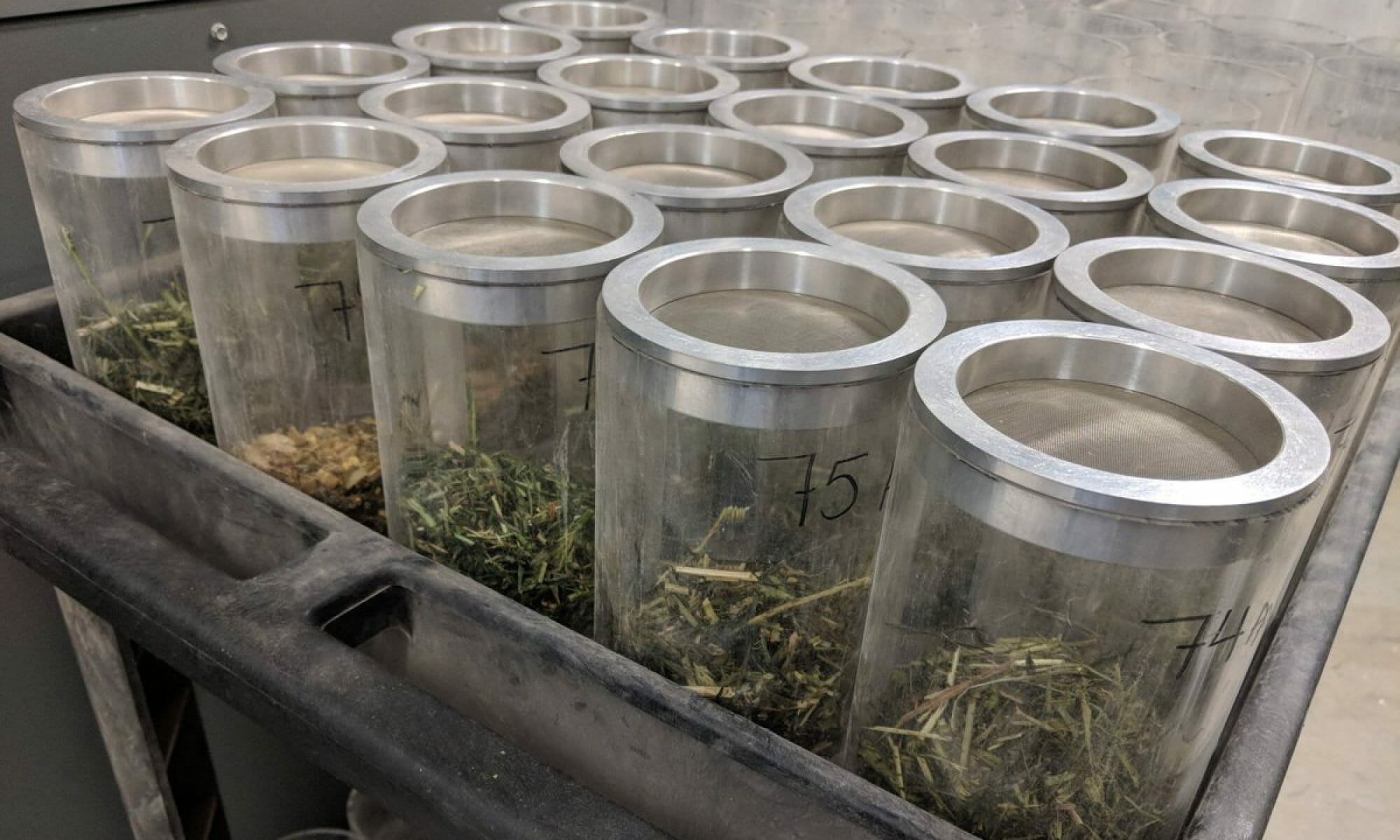Explanation of goal and options – Many soils have higher than ideal pH levels. There are ways to lower soil pH into the 6-7 range but the effectiveness of the methods will depend on several of factors:
- Soil Texture
- CEC
- Calcium Carbonate Content
- Sub soil
- Material used to acidify. Elemental sulphur is generally considered themost cost effective wal to lower pH.
The presence of calcium carbonate (found on our complete soil test) in particular will make it a challenge to cost effectively lower pH.
Calculations
- Calculate the lime required to neutralize 1% carbonate in the soil – 3 tons/acre of elemental sulphur are required for every percent of calcium carbonate. Example: if the carbonates on your report is 0.5% then you need 1.5 tons/acre.
- Calculate the amount of lime required to lower your pH into the desired range using the chart below and add this to your amount in step one.
| Desired change in pH | Sand (CEC 5) | Silt loam (CEC 10) | Clay (CEC 20) |
| lb S/Acre | |||
| 8.5 to 6.5 | 370 | 730 | 1460 |
| 8.0 to 6.5 | 340 | 670 | 1340 |
| 7.5 to 6.5 | 300 | 600 | 1200 |
| 7.0 to 6.5 | 180 | 360 | 720 |
Other Considerations
- Soil bacteria convert the sulfur to sulfuric acid lowering the soil pH. It is important to note that this is a biological process (slow) and not a chemical reaction (rapid). The bacteria are active, when the soil is moist and warm. The soil temperature needs to be above 55F. The bacteria are not active in the winter so fall applications of sulfur have little effect on the soil pH next spring.
- In addition, the soil must not be saturated, or flooded (anaerobic) or the sulfur is converted to hydrogen sulfide (rotten egg smell) by anaerobic bacteria. Hydrogen sulfide kills plant roots.
- It is not reccomended to apply more tha 400lb/acre per year.
References:
https://ohioline.osu.edu/factsheet/agf-507
https://www.canr.msu.edu/uploads/files/Lowering_Soil_pH_with_Sulfur.pdf

